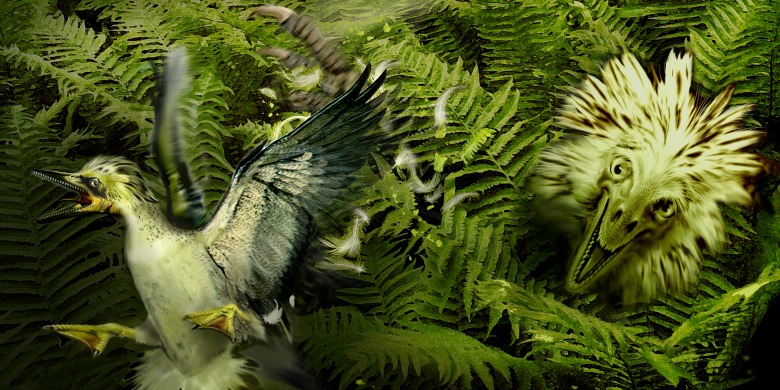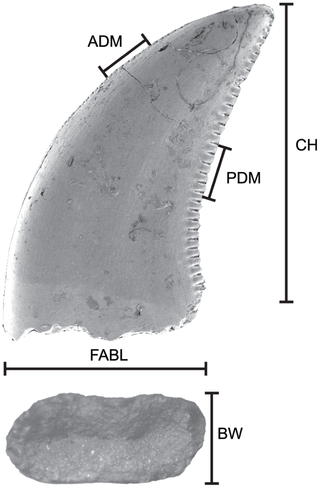Fossilized teeth have led to identification of at least 23 species of small meat-eating dinosaurs that roamed western Canada and the United States between 85 and 65 million years ago, a large increase from the 7 species of small two-legged meat-eating dinosaurs from the North American west that had previously been identified.
The researchers examined a massive dataset of fossil teeth that included samples from members of the families to which Velociraptor and Troodon (possibly the brainiest dinosaur) belong.
The researchers say the huge increase in the number of small meat-eating species to 23 shows that instead of a few species existing for many millions of years, there were actually many small meat-eating species, each existing for shorter periods of time.

A Troodon, one of the small carnivores characteristic of Alberta dinosaurs, tries to catch a toothed bird. Artwork: Jan Sovak
The researchers say these two-legged dinosaurs ranged from the size of a chicken to two meters long. In most cases, tooth fossils are all that remains of small dinosaurs.
"We can identify what meat-eaters lived in what geographic area or geologic age," explained paleontologist Philip Currie. "And we can do this by identifying just their teeth, which are far more common than skeletons. It’s the same situation you have in today’s world with the remains of small animals like weasels. Because the bones are light and small in size, after the animal dies the bones scatter, and if they’re not covered by sand or mud they disintegrate very quickly.”
Luckily, the researchers do have fossilized skeletons with teeth for some of the small meat-eaters. For example, Troodon is a two-legged meat-eater about two metres in length, and Alberta is one area where its fossils have been found.
"Small meat-eating dinosaur skeletons are exceedingly rare in many parts of the world and, if not for their teeth, would be almost completely unknown," said University of Toronto paleontologist Derek Larson.

Tooth measurements used in this study. ADM, anterior denticles per millimetre; BW, basal width; CH, crown height; FABL, fore-aft basal length; and PDM, posterior denticles per millimetre. Credit:
doi:10.1371/journal.pone.0054329.g001
Measurements were collected from 1183 complete teeth from ten Upper Cretaceous formations representing four time-slices equivalent to the Aquilan (<83.5–80.0 Ma, latest Santonian to early Campanian), Judithian (80.0–75.0 Ma, middle to late Campanian), Edmontonian (72.8–66.8 Ma, late Campanian to Maastrichtian), and Lancian (66.8–65.5 Ma, latest Maastrichtian) North American Land Mammal Ages.
Citation: Larson DW, Currie PJ (2013) Multivariate Analyses of Small Theropod Dinosaur Teeth and Implications for Paleoecological Turnover through Time. PLoS ONE 8(1): e54329. doi:10.1371/journal.pone.0054329





Comments